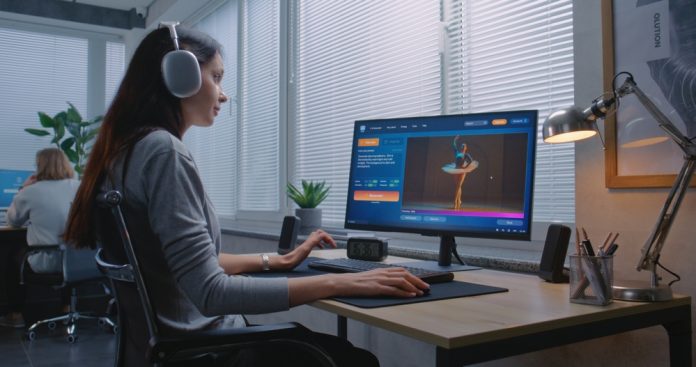
Training and upskilling the workforce have always been integral components of business success. However, the modern workplace is grappling with various obstacles that have made employee advancement and knowledge-sharing more challenging than ever. Take, for example, record-low employee engagement, combined with the impending retirement age-related exits of the current generation. As businesses prepare for looming knowledge gaps, effectively and efficiently transferring valuable knowledge and nurturing the development of their current workforce is surfacing as an urgent priority.
Traditional Training Falls Short
As modern businesses navigate new challenges, learning and professional development must evolve. As it stands, critical knowledge is primarily tied to unique processes, protocols, and standards, and as a result, employees become the primary source of expertise. When an employee leaves, whether it’s due to retirement or the increased turnover rates, business-critical knowledge is traditionally not passed down in an effective and repeatable manner. That’s why, despite significant investments in employee development, 86 percent of organizations remain dissatisfied with their training programs.
Unsuccessful training programs have a set of common denominators. First, scattered tools make it incredibly difficult for employees to find relevant information quickly while juggling multiple platforms. Workers spend up to six hours a week searching various tools for information, wasting time that could be used for more valuable and impactful tasks. Outdated content also creates barriers to learning; yet, a majority of organizations still struggle to keep their training materials fresh and engaging. As technology advances and organizations continue to undergo digital transformation, keeping these materials aligned with the pace of change is also incredibly challenging.
The Power of Video-Based Training
The use of video has made waves in the business world over the past several years. While a significant focus has been on utilizing video collaboration tools for meetings, this only scratches the surface of the technology’s potential. Video learning platforms are a powerful tool for engaging the current workforce, breaking down siloed information, and improving knowledge retention across the entire organization.
Take, for example, the fact that the average person retains 95 percent of a message when they receive it in video form, compared to only 10 percent via text. Video-based training also addresses the learning preferences of younger workers, with millennials being almost 300 percent more likely to prefer learning through videos rather than books. Not only does video accommodate learning styles across various geographic regions, but its versatility is also ideal for a range of industries.
For instance, manufacturing can leverage video to demonstrate highly technical, hands-on skills, like safely operating heavy equipment. Video learning also enables workers to upskill, re-train, and get new employees up to speed whenever colleagues leave, or equipment demands change. Alternatively, video is just as impactful in corporate environments. As business environments become increasingly digital and distributed, video learning enables teams to share knowledge in a way that transcends geographical limitations and breaks down barriers to accessing information.
Why This Method Works
Having an engaged workforce that is continuously learning and adapting to change is a business advantage that cannot be overstated. Organizations that embrace video quickly reap the benefits of tangible business outcomes. While success will look different for every industry, there are four key benefits that video provides that other training models do not:
- Alignment with Modern Learning Preferences: In the age of shortened attention spans, microlearning is becoming an increasingly efficient way for the new workforce to retain information. Video is an ideal format for these concise, targeted lessons.
- Flexibility and Accessibility: Video enables on-demand learning, allowing employees to access training at any time and from anywhere. As organizations are becoming more aware of different learning styles, this is key to engaging AI.
- Enhanced Engagement and Retention: Video content is inherently more engaging than text-based or in-person training. The proof? Companies using video for training report a 53 percent reduction in employee turnover.
- Efficiency and Cost Savings: By providing information in an easy-to-consume and accessible format, businesses can save both time and money by eliminating logistical hurdles associated with everyday tasks.
The Future is AI-Powered Video
While video on its own is compelling, AI brings these solutions to the next level. The use of AI transforms how organizations store and use their knowledge and expertise. Existing video content becomes indexed by spoken words, text on slides, and metadata, creating a dynamic resource for current employees. Ultimately, organizations can retain decades of expertise regardless of workforce fluctuations.
While knowledge retention is pivotal, workforce potential cannot be fully reached unless this information becomes easily accessible. AI-powered video libraries can transform an organization’s disorganized archives into searchable, structured repositories. Imagine a scenario where an employee needs to retrieve information on a specific topic. While traditionally, they would have to go through hours of video to find exactly what they need, AI allows them to type in a keyword and instantly see the exact information they are searching for.
While the modern workplace is rapidly changing, people will always remain the foundation of business success. However, practical training and professional development are key to maximizing the potential of the workforce and staying relevant in an increasingly competitive landscape. By leveraging AI-powered video learning, employers can drive employee engagement, improve retention, safeguard their business against knowledge gaps, and ultimately achieve their goals faster and more efficiently.




